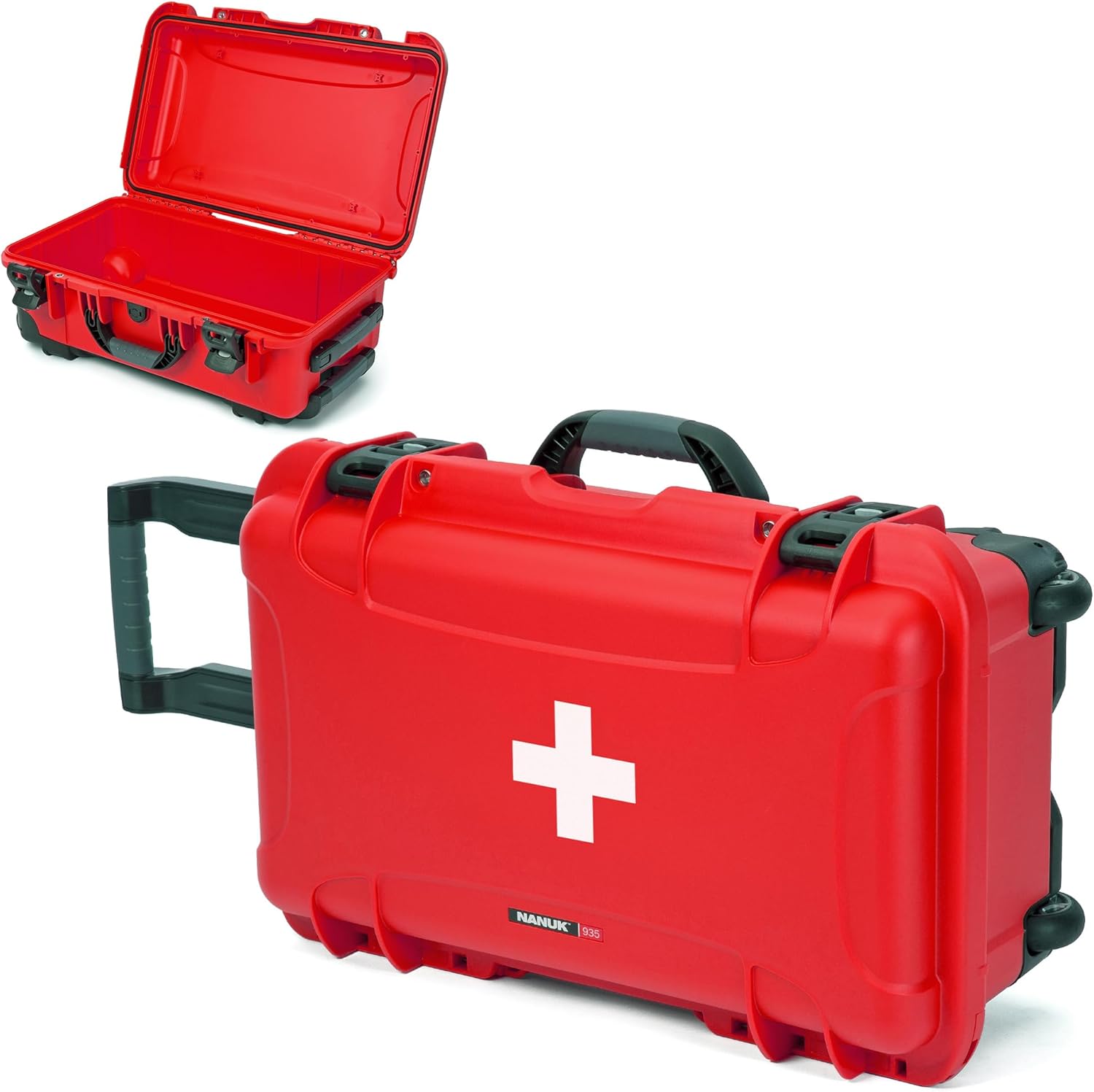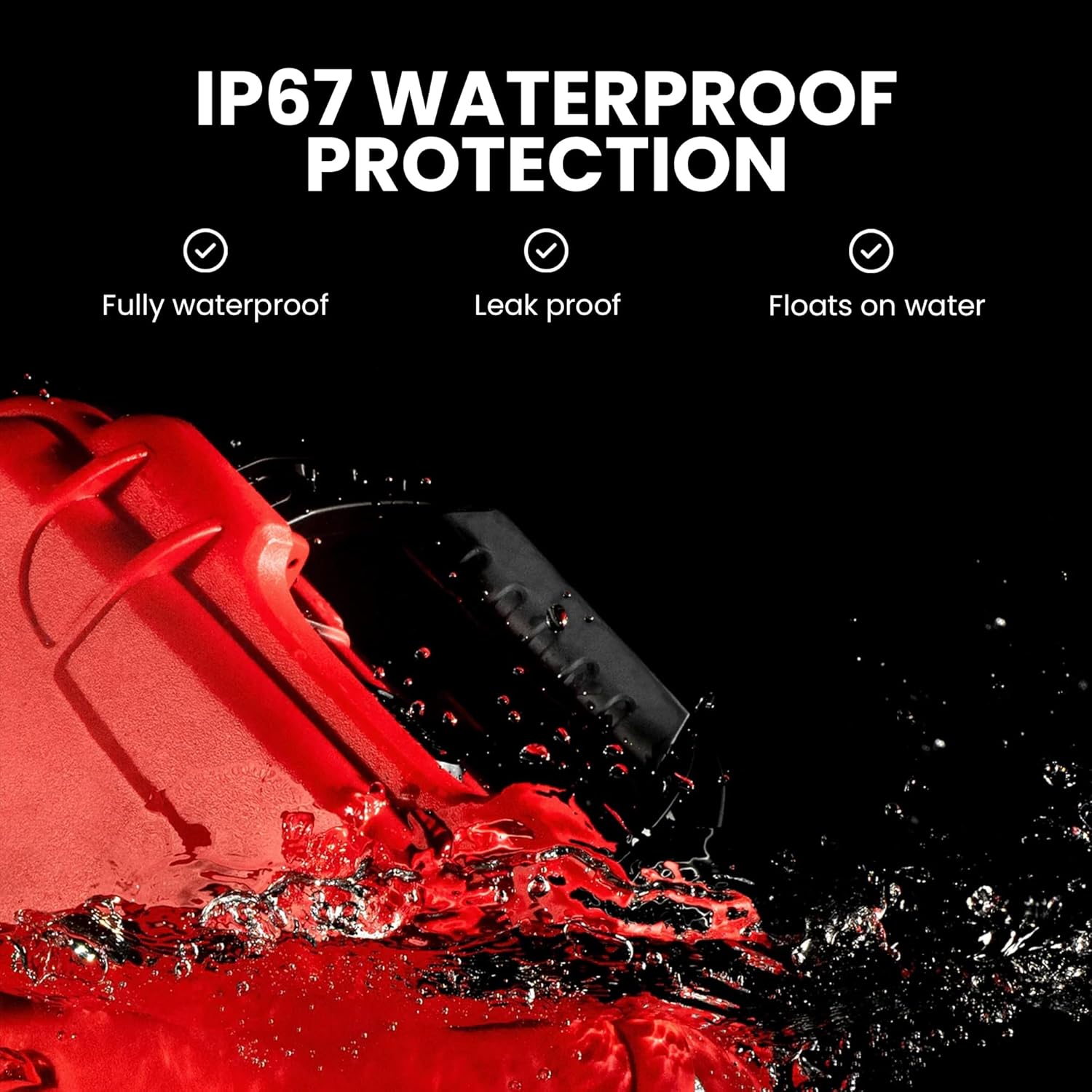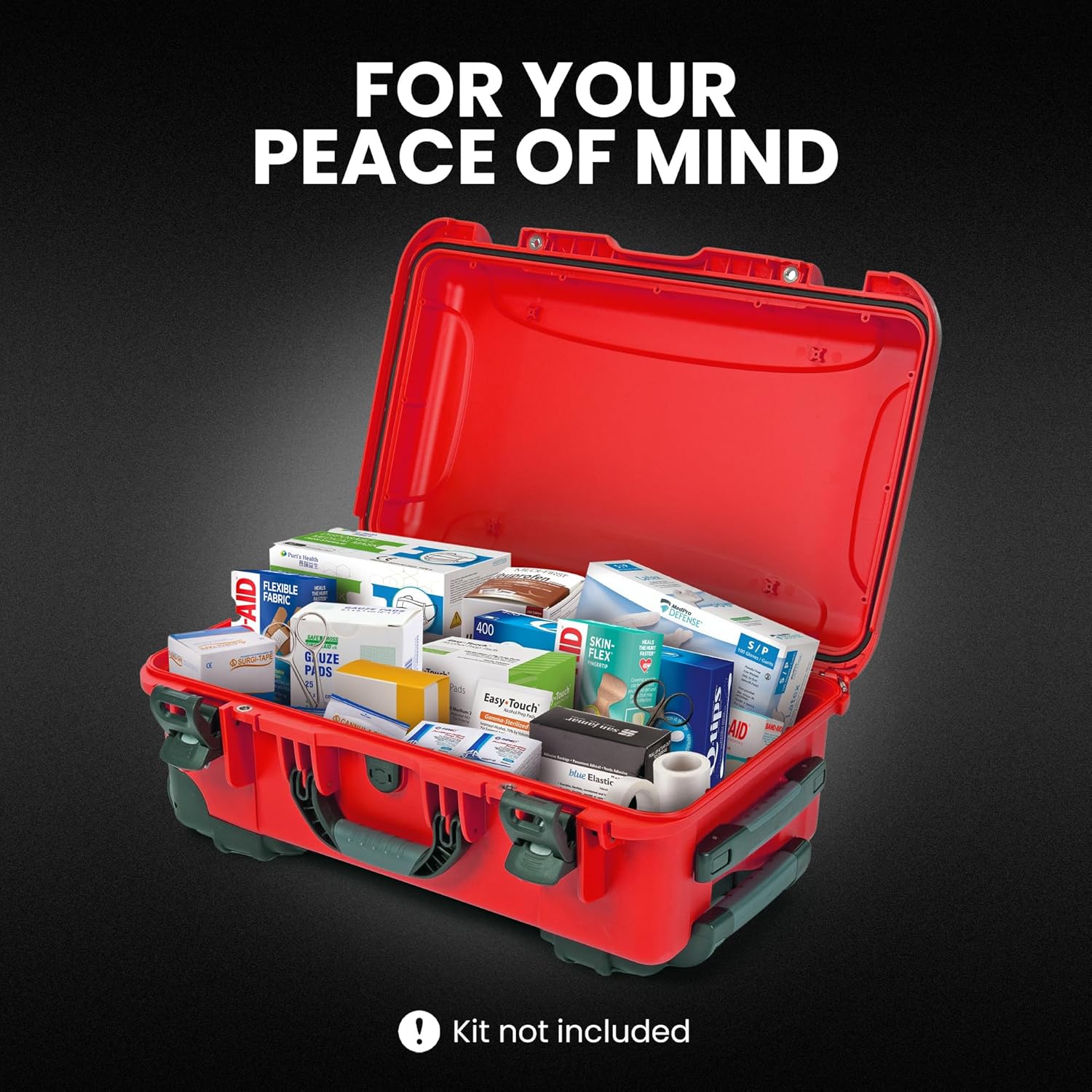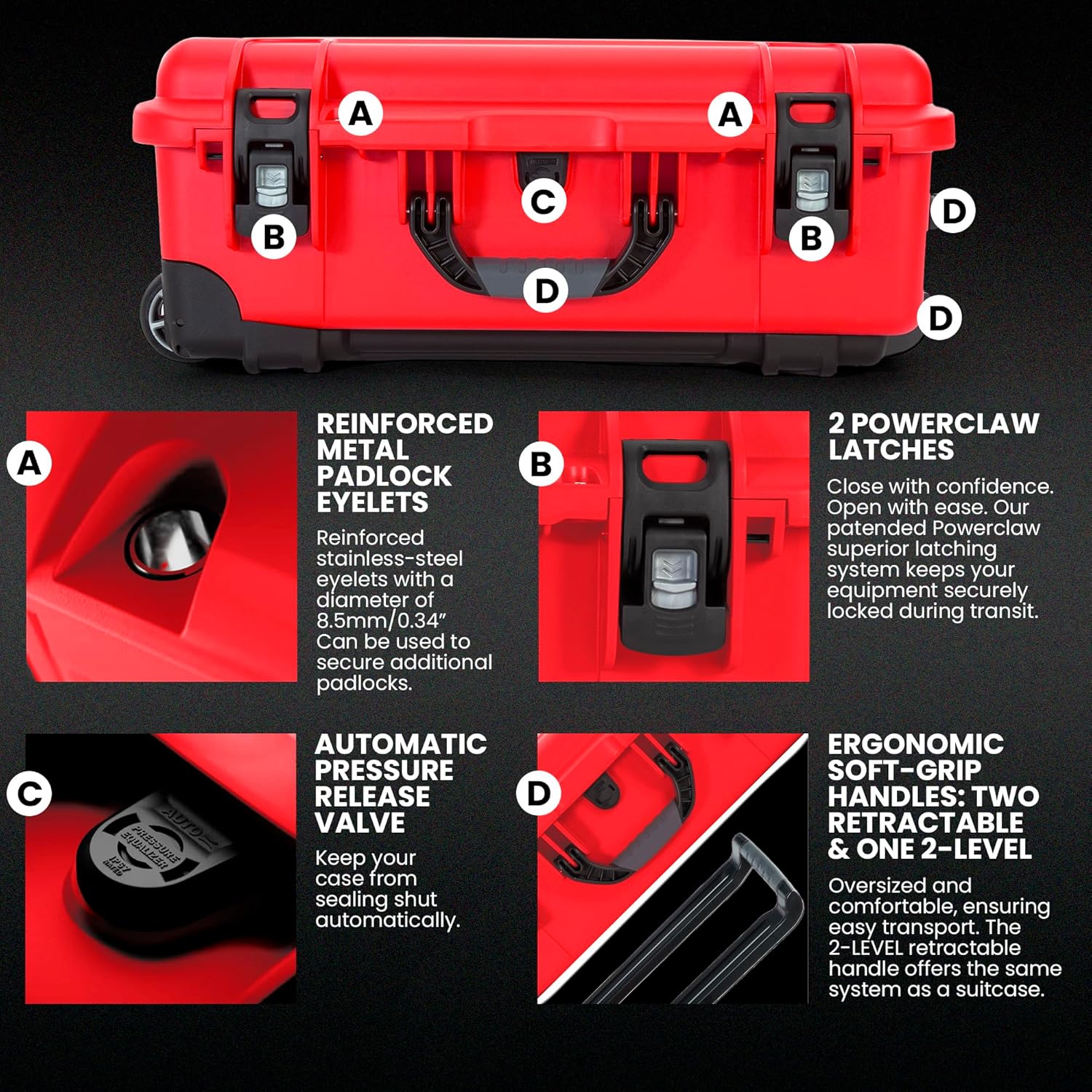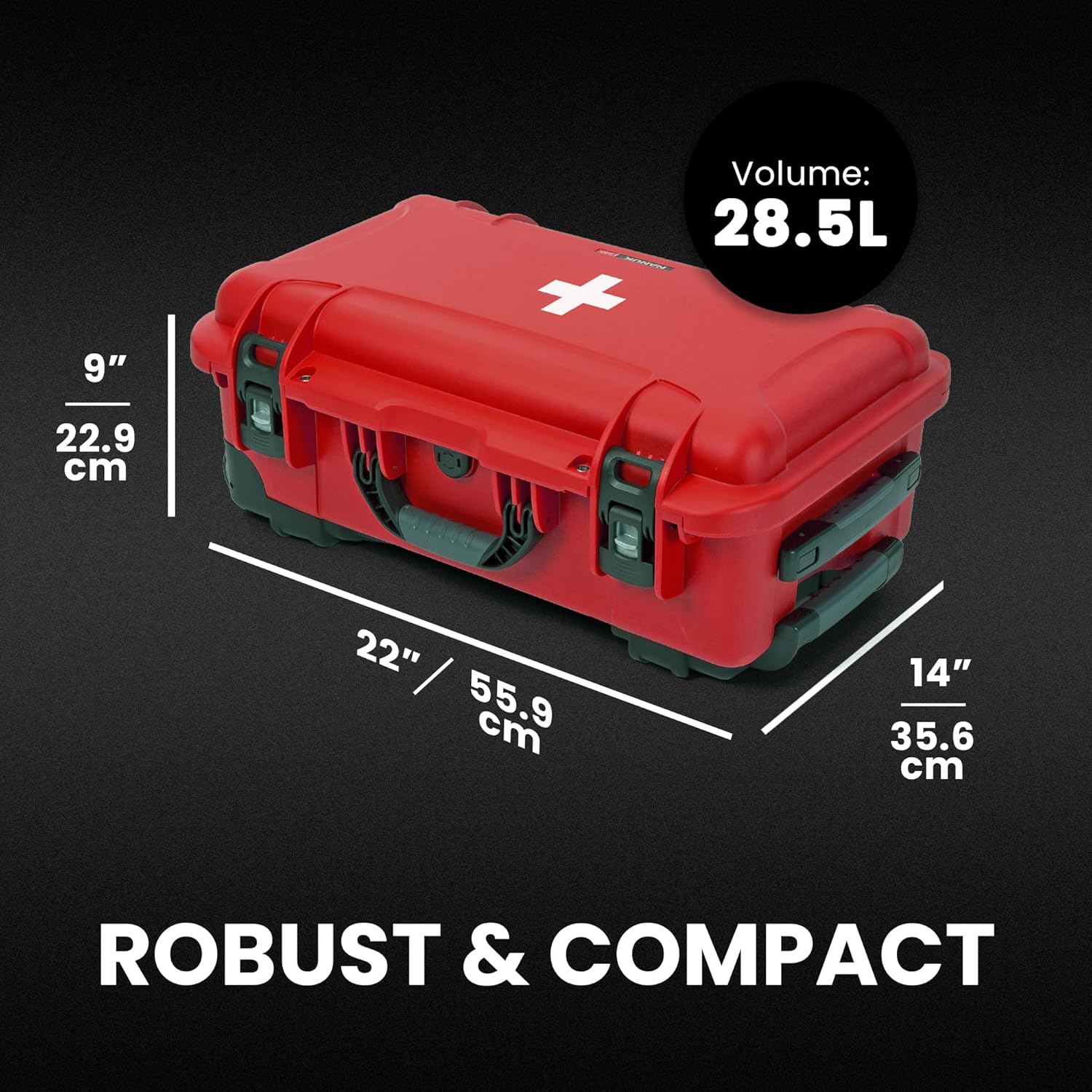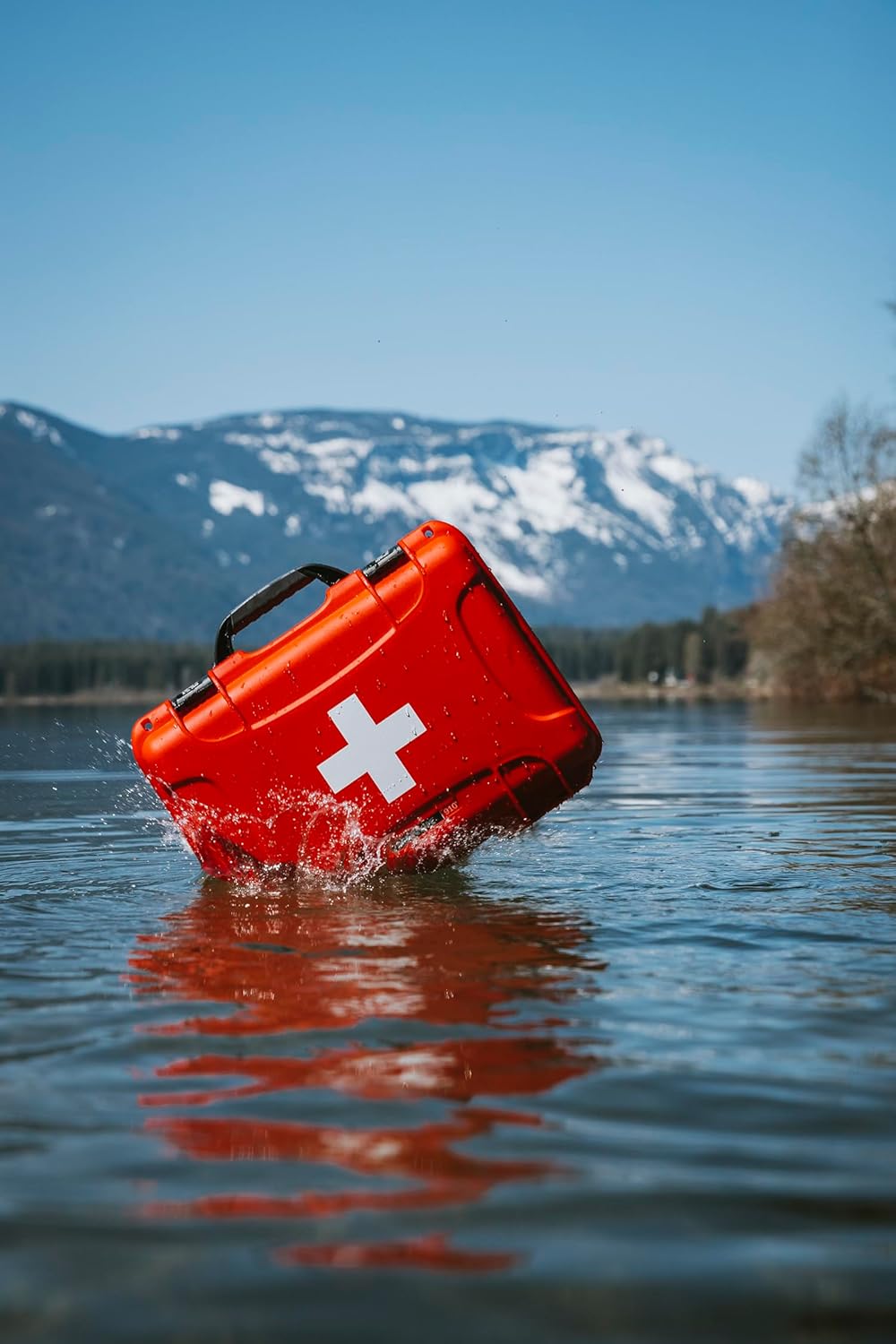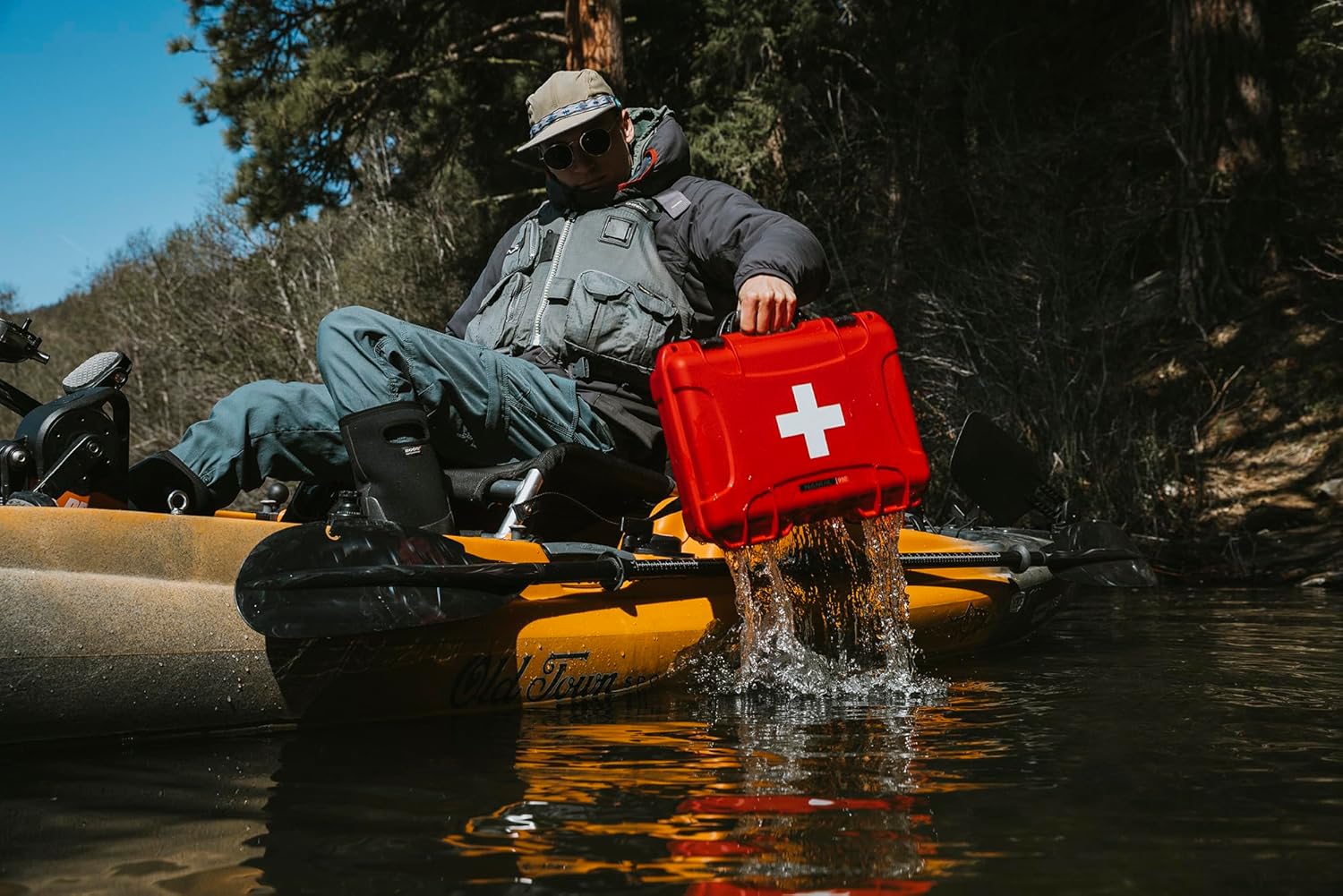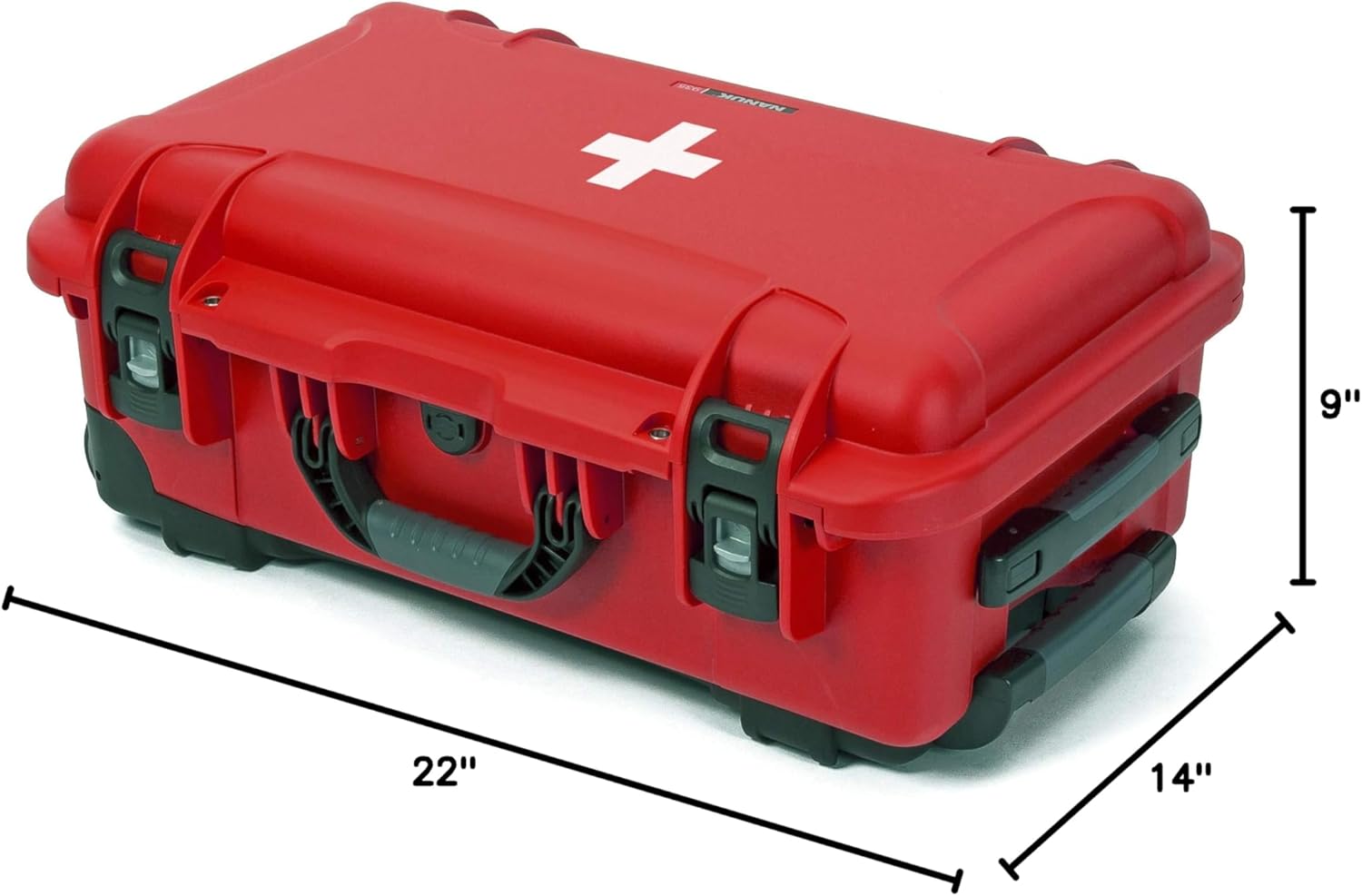
Best NANUK 935 Wheeled Waterproof First Aid Review nanuk 935 – Oemiu
<!DOCTYPE html>
NANUK 935 Wheeled Waterproof First Aid Review
Imagine this: You’re miles from civilization, deep in the backcountry on a multi-day hiking trip. A member of your group takes a nasty fall, resulting in a deep gash. Time is of the essence. You need immediate access to a comprehensive first aid kit, one that’s not only well-stocked but also protected from the elements and easy to transport. This is where the NANUK 935 wheeled waterproof case comes into play, specifically when configured as a rugged and reliable first aid solution. We’re not just talking about a basic Band-Aid dispenser here; we’re diving deep into a purpose-built system designed for serious situations, offering peace of mind when venturing into the unknown. But is it truly worth the investment? Let’s explore.
The Foundation: Understanding the NANUK 935
The NANUK 935 isn’t just any case; it’s a fortress on wheels, built to withstand the harshest conditions. At its core, it’s a professional-grade, injection-molded NK-7 resin case. This isn’t the flimsy plastic you find in cheap suitcases; this material is incredibly impact-resistant. Think dropping it off the back of a truck (not recommended, but you get the idea) and it’ll likely survive with minimal damage. The waterproof rating is another key feature, ensuring your vital medical supplies remain dry even in torrential downpours or accidental submersion. The PowerClaw latching system, with its integrated slide lock, provides a secure and reliable seal, preventing unwanted opening during transport. The polyurethane wheels and retractable handle make maneuvering the case over rough terrain a breeze, a crucial factor when dealing with an emergency situation where every second counts.
Think about how a traditional backpack-based first aid kit might fare in similar scenarios. Backpacks can get soaked through, crushing sensitive items, or burying needed medical devices beneath many other supplies. And what about hauling a heavy pack while rushing to treat an injury? The wheeled design of the NANUK 935 instantly addresses these limitations. While some might argue that backpacks are more agile, the NANUK 935’s wheels and handle shine on trails that aren’t excessively rocky or steep. Consider the types of environments you’ll be operating in when making your decision. For expeditions involving vehicles, boats, or relatively accessible terrain, the NANUK 935’s wheeled design is a clear advantage. The built-in automatic pressure release valve also balances interior pressure, preventing the case from becoming impossible to open after altitude changes or extreme temperature swings – a common issue with lesser waterproof cases. These thoughtful design features combine to create a case that’s not just durable, but also remarkably user-friendly in demanding situations. A lot of people are looking at this case as a reliable medical solution, which is why a detailed review of the nanuk 935 wheeled waterproof case is important.
Configuring the NANUK 935 as a First Aid Powerhouse
The real magic of the NANUK 935 lies in its ability to be customized to your specific needs. While the case itself is impressive, it’s what you put inside that truly matters. Pre-made first aid kits often fall short, lacking specialized equipment or containing items that are past their expiration dates. Building your own kit within the NANUK 935 allows you to tailor the contents to the specific risks and requirements of your adventures.
Consider these essential components when building out your medical setup:
* **Basic Wound Care:** Sterile gauze pads of various sizes, antiseptic wipes, adhesive bandages (Band-Aids) in multiple shapes and sizes, medical tape, and a non-adherent dressing.
* **Advanced Wound Management:** Hemostatic agents (like QuikClot) to control severe bleeding, suture/staple kits for closing larger wounds, and irrigation syringes for cleaning wounds effectively.
* **Medications:** Pain relievers (ibuprofen, acetaminophen), antihistamines for allergic reactions, anti-diarrheal medication, and any personal prescription medications required by members of your group.
* **Splinting and Immobilization:** SAM splints, triangular bandages, elastic bandages (Ace wraps), and potentially a cervical collar depending on the risk of spinal injuries.
* **Diagnostic Tools:** A stethoscope, blood pressure cuff, pulse oximeter, and thermometer to assess vital signs.
* **Personal Protective Equipment (PPE):** Gloves (nitrile or latex), face masks, eye protection, and a CPR shield to protect yourself while providing care.
* **Specialized Equipment:** Depending on your activities, consider including items like an epinephrine auto-injector (EpiPen) for severe allergic reactions, an asthma inhaler, or a snake bite kit.
* **Tools and Instruments:** Trauma shears for cutting clothing, tweezers for removing splinters or debris, a penlight for examining injuries, and a notebook with a pen for recording patient information.
Organizing these items within the NANUK 935 is crucial. Consider using modular dividers, padded pouches, or even custom foam inserts to create a secure and accessible system. Color-coding different sections can also help you quickly locate specific items in an emergency. Think of it as your mobile medical command center. In addition, you could consider adding a survival kit, which includes a knife, fire starter, and other essential gear, to the NANUK 935 as well. This would create an even more robust solution. Securing this configuration inside the NANUK 935 for first aid is the key to a truly powerful and reliable system.
| Component | Description | Why It’s Important |
|---|---|---|
| Sterile Gauze Pads | Various sizes, individually wrapped. | Essential for cleaning and covering wounds. |
| Hemostatic Agents | QuikClot, Celox. | Stops severe bleeding quickly. |
| SAM Splint | Flexible, moldable splint. | Immobilizes fractures and sprains. |
| Epinephrine Auto-Injector (EpiPen) | For severe allergic reactions. | Life-saving for anaphylaxis. |
| Trauma Shears | Heavy-duty scissors. | Cuts through clothing quickly. |
Real-World Applications and Scenarios
The true value of the NANUK 935 as a first aid case becomes clear when considering real-world scenarios. Imagine a search and rescue team responding to a hiker lost in the wilderness. They need a comprehensive medical kit that can withstand the rigors of the terrain, protect sensitive medications, and be easily transported. The NANUK 935, with its rugged construction and wheeled design, is perfectly suited for this task. The team can quickly deploy the case, access the necessary medical supplies, and provide critical care to the injured hiker.
Or consider a remote construction site where immediate medical assistance is not readily available. The NANUK 935, stocked with appropriate supplies, can serve as a vital resource for treating injuries on-site. The waterproof and dustproof design ensures that the supplies remain clean and functional, even in harsh working conditions. The wheeled design allows for easy transport around the job site, reducing the risk of further injury to those providing assistance.
Another scenario could be a family embarking on an extended road trip. Accidents can happen anywhere, and having a well-equipped first aid kit readily available can make a significant difference. The NANUK 935 can be easily stored in the vehicle and quickly accessed in case of an emergency. The customizable interior allows you to tailor the kit to the specific needs of your family, including medications, allergy treatments, and other essential items. The peace of mind knowing that you’re prepared for any medical situation is invaluable. In many of these circumstances, the nanuk 935 wheeled waterproof first aid kit represents a considerable advantage in the preparedness arena.
Beyond these specific examples, the NANUK 935 can be adapted for a wide range of applications, including:
* **Disaster Relief:** Providing medical care in areas affected by natural disasters.
* **Outdoor Events:** Serving as a first aid station at sporting events, concerts, or festivals.
* **Remote Research Expeditions:** Ensuring the safety and well-being of researchers working in isolated locations.
* **Industrial Settings:** Providing medical support in factories, warehouses, and other industrial environments.
The key takeaway is that the NANUK 935 is not just a case; it’s a versatile platform for creating a customized medical solution that can be adapted to meet the unique needs of any situation.
Advantages and Potential Drawbacks of the Nanuk 935 for First Aid
As with any piece of equipment, the NANUK 935 has its strengths and weaknesses. Understanding these pros and cons can help you determine if it’s the right choice for your needs.
**Advantages:**
* **Unmatched Durability:** The NK-7 resin construction provides exceptional impact resistance.
* **Superior Waterproofing:** Protects medical supplies from water damage, ensuring they remain functional.
* **Easy Transport:** The wheels and retractable handle make it easy to maneuver over rough terrain.
* **Customizable Interior:** Allows you to tailor the kit to your specific needs.
* **Secure Latching System:** Prevents accidental opening during transport.
* **Pressure Release Valve:** Balances interior pressure, making it easy to open the case in any environment.
* **Professional Appearance:** Provides a professional and organized image.
**Potential Drawbacks:**
* **Cost:** The NANUK 935 is more expensive than traditional first aid kits or soft-sided cases.
* **Weight:** The case itself is relatively heavy, even when empty.
* **Size:** The size of the case may be too large for some applications, particularly where space is limited.
* **Wheel Limitations:** The wheels may not be suitable for extremely rugged or rocky terrain.
* **Overkill for Basic Needs:** If you only need a basic first aid kit, the NANUK 935 may be overkill.
* **Requires Customization:** The case itself is empty, so you’ll need to invest time and effort in customizing the interior.
Ultimately, the decision of whether or not to invest in a NANUK 935 for first aid depends on your specific needs and priorities. If you require a highly durable, waterproof, and easily transportable solution for a comprehensive medical kit, the NANUK 935 is an excellent choice. However, if you’re on a tight budget or only need a basic kit, there may be more affordable and lightweight options available. For those planning extreme outdoor situations, it’s important to compare the nanuk 935 vs pelican cases to determine the best case.
| Feature | NANUK 935 | Typical Soft-Sided First Aid Kit |
|---|---|---|
| Durability | Extremely High | Low to Medium |
| Waterproofing | Completely Waterproof | Water-Resistant (at best) |
| Transport | Wheels and Retractable Handle | Carrying Handle or Backpack Straps |
| Customization | Highly Customizable | Limited Customization |
| Cost | Higher | Lower |
Alternative Solutions and Considerations
While the NANUK 935 offers a compelling solution for many first aid needs, it’s essential to consider alternative options and factors before making a final decision. Depending on your specific requirements and budget, other cases or kits may be more suitable.
One alternative is a hard-sided Pelican case. Pelican cases are known for their durability and waterproofing, and they offer a range of sizes to choose from. However, Pelican cases typically don’t come with wheels, which can be a disadvantage when transporting heavy loads over long distances.
Another option is a soft-sided medical bag or backpack. These bags are typically more lightweight and affordable than hard-sided cases, but they offer less protection from impact and water damage. They may be a good choice for situations where weight and portability are more important than durability.
When choosing a first aid solution, consider the following factors:
* **The type of activities you’ll be participating in:** Are you hiking, camping, working in a remote location, or simply keeping a kit in your car?
* **The size of your group:** How many people will the kit need to support?
* **The potential risks and hazards:** What types of injuries are you most likely to encounter?
* **Your budget:** How much are you willing to spend on a first aid kit?
* **Your level of medical training:** Are you a trained medical professional or a layperson?
* **The climate and environment:** Will you be operating in wet, dusty, or extreme conditions?
By carefully considering these factors, you can choose a first aid solution that meets your specific needs and provides you with the peace of mind knowing that you’re prepared for any medical situation. It’s also crucial to regularly inspect and maintain your first aid kit, replacing any expired or damaged items. Consider a smaller secondary case for situations where only basic care is needed. The nanuk 935 series also offers other sizes, that may be more appropriate for certain applications. This will ensure that your kit is always ready when you need it most.
FAQ
What are the key features of the NANUK 935 that make it suitable for use as a first aid case?
The NANUK 935 offers several features that make it ideal for use as a first aid case. First and foremost, its durability is unmatched, thanks to the NK-7 resin construction. This ensures that the case can withstand impacts and rough handling without compromising the safety of the medical supplies inside. Secondly, it’s completely waterproof, protecting sensitive items from moisture damage, which is crucial in outdoor or wet environments. The integrated wheels and retractable handle make transport easy, especially when dealing with heavy or bulky equipment. Customization options are abundant, allowing you to organize the interior to suit your specific medical needs. Finally, the secure PowerClaw latching system prevents accidental openings, guaranteeing that your supplies remain secure during transport.
How does the waterproof rating of the NANUK 935 benefit a first aid kit?
The NANUK 935’s waterproof rating provides a significant advantage for a first aid kit, especially in situations where exposure to water or moisture is likely. Consider the challenges of providing medical care in rain, near bodies of water, or in humid environments. A waterproof case ensures that all your medical supplies, including bandages, medications, and electronic devices, remain dry and functional. This is crucial because moisture can compromise the sterility of bandages, render medications ineffective, and damage sensitive equipment. By protecting against water damage, the NANUK 935 helps maintain the integrity and effectiveness of your first aid supplies, ensuring that they are ready to use when needed most.
What type of terrain is the NANUK 935 suitable for, considering its wheeled design?
The NANUK 935’s wheeled design makes it well-suited for a variety of terrains, but it’s important to understand its limitations. It excels on relatively smooth surfaces such as paved roads, packed trails, and indoor environments. The polyurethane wheels provide good traction and maneuverability on these surfaces. However, the wheels may struggle on extremely rough or rocky terrain, deep sand, or thick mud. In these situations, carrying the case may be necessary. Consider the types of environments where you’ll be using the first aid kit when evaluating the suitability of the wheeled design. For expeditions involving vehicles or primarily smooth surfaces, the wheels offer a significant advantage in terms of transport.
How do you properly organize and customize the interior of the NANUK 935 for optimal first aid use?
Organizing and customizing the NANUK 935’s interior is crucial for creating an efficient and accessible first aid kit. Start by assessing your specific medical needs and the types of supplies you’ll be carrying. Consider using modular dividers to create separate compartments for different categories of items, such as wound care, medications, and diagnostic tools. Padded pouches can help protect delicate equipment like blood pressure cuffs or stethoscopes. Custom foam inserts offer the most secure and tailored solution, but they require more time and effort to create. Color-coding different sections can also improve accessibility, allowing you to quickly locate specific items in an emergency. Remember to label each compartment clearly, so that anyone can easily find what they need. Regularly review and reorganize your kit to ensure that it remains well-organized and stocked.
What are some essential items that should always be included in a first aid kit stored in a NANUK 935?
A comprehensive first aid kit stored in a NANUK 935 should include a variety of essential items to address a range of potential medical emergencies. At minimum, always include sterile gauze pads, antiseptic wipes, adhesive bandages in multiple sizes, medical tape, and non-adherent dressings for basic wound care. For more serious injuries, add hemostatic agents like QuikClot to control bleeding, suture/staple kits for wound closure, and irrigation syringes for cleaning wounds. Medications such as pain relievers, antihistamines, and anti-diarrheal medication should also be included, along with any personal prescriptions. Don’t forget splinting and immobilization supplies like SAM splints and elastic bandages. Diagnostic tools like a stethoscope, blood pressure cuff, and thermometer can help assess vital signs. Finally, include personal protective equipment like gloves, face masks, and eye protection to protect yourself while providing care. This is a good starting point, but you should tailor it to your specific needs.
How does the NANUK 935 compare to other hard-sided cases, such as Pelican cases, for first aid applications?
The NANUK 935 and Pelican cases are both excellent options for hard-sided first aid cases, but they have some key differences. Both offer exceptional durability and waterproofing, making them suitable for demanding environments. However, the NANUK 935 often features a slightly lighter weight and a more ergonomic handle design. Some NANUK models, including the 935, come standard with wheels, while many Pelican cases require purchasing wheels separately or choosing a specific wheeled model. The latching mechanisms also differ, with NANUK using its PowerClaw system and Pelican using its signature double-throw latches. Ultimately, the best choice depends on personal preference and specific requirements. Consider factors such as weight, wheel availability, latching style, and price when making your decision. Be sure to check out the latest nanuk 935 deals available.
What are the best practices for maintaining and inspecting a first aid kit stored in a NANUK 935?
Regular maintenance and inspection are crucial for ensuring that your first aid kit stored in a NANUK 935 is always ready for use. At least every three to six months, conduct a thorough inventory of all items, checking expiration dates and replacing any expired medications or supplies. Inspect bandages and dressings for damage or contamination. Ensure that electronic devices, such as thermometers and pulse oximeters, are functioning properly and have fresh batteries. Clean the inside of the NANUK 935 with a mild disinfectant to prevent the growth of mold or bacteria. Check the wheels and handle for smooth operation and lubricate as needed. Store the NANUK 935 in a cool, dry place, away from direct sunlight and extreme temperatures. Keeping a log of inspections and restocking dates can help you stay organized and ensure that your kit is always up to date.
